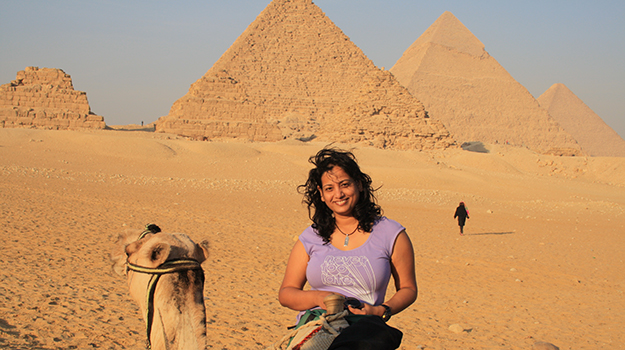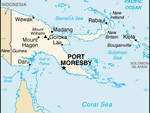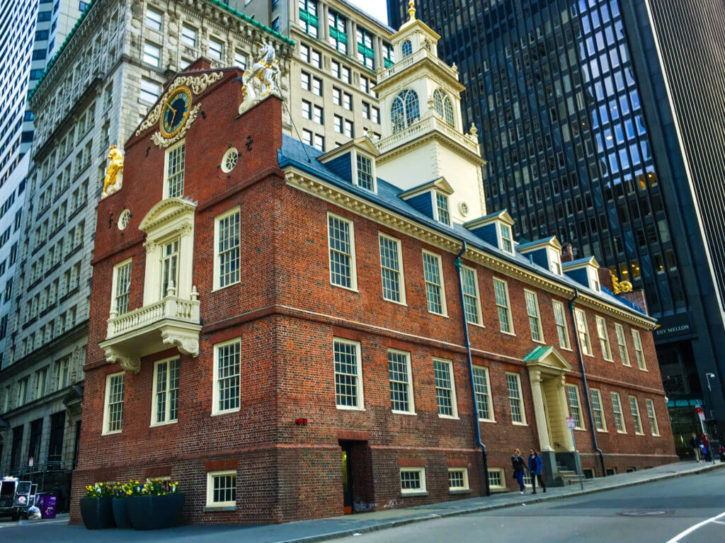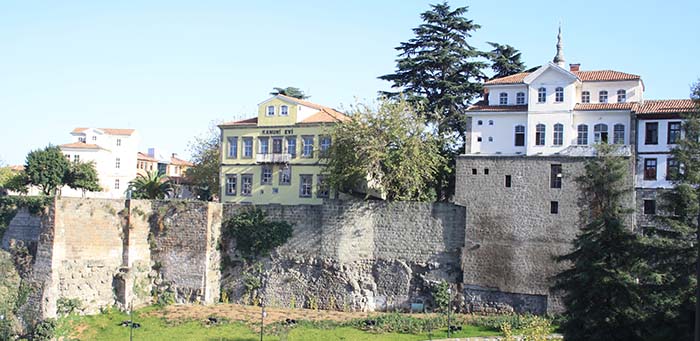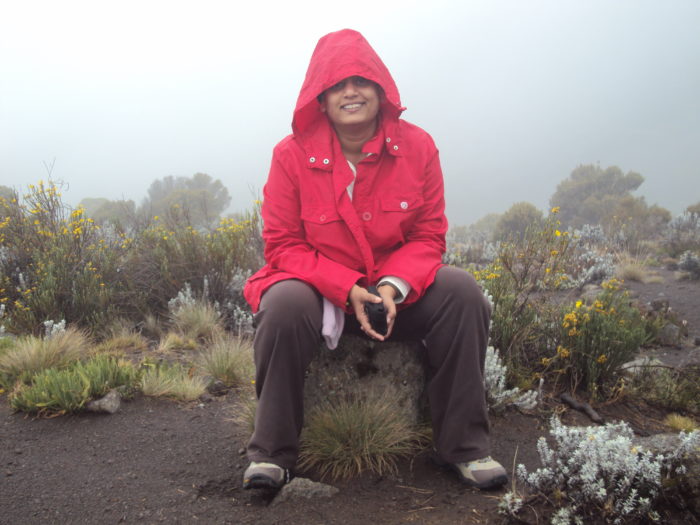Perhaps the most prominent of all the ancient structures in the world, The Giza Pyramids are nothing but WONDERFUL in all aspects.
Giza Pyramids
As all good visitors to Egypt, I too kept my appointment with the Sphinx and her precious Pyramids, after nearly being conned into hiring a taxi outside Cairo railway station. Few inquiries later I reached Giza on the Metro for one Egyptian Pound!
It wasn’t hard to escape the stream of taxi drivers outside Giza station and I escaped to the nearest bus-station for transport. Those traveling on their own will be happy to know that there are many options to reach the village of Nazlet el Saman, the doorstep of the Pyramids – namely the micro-bus, big bus and taxis with proper meters.

When I finally made it to the Pyramids after haggling with the camel-owner over tea for ten minutes, the desert had been taken over by tourists. My camel, a handsome fellow with pyramids carved into his behind, prone to farting when goaded to speed up, sensed my unease and decided to give me a hard time. So I rocked my way over the sands worried I would drop my bones before I made it to the greatest wonder of the world. Rami, my handler cum guide, explained that the camel responded strictly to Arabic (Yalla Yalla) and sharp kicks, which was cruel.
But the sight of the Pyramids more than made up for the camel’s indifference and as I pressed my face against the colossal stone wonder, a thought came to mind.
Faith can build mountains.
It was a big moment to see the Pharonic pyramids so close. There is not much to see inside the Pyramids, (the mummies now rest at Cairo Museum but once there the enormity of the situation strikes. The dark passageways can be a bit claustrophobic, but not enough to kill you after all you are standing inside a man-made mountain built centuries ago, even before the abbreviation A.D was conceived! Every stone that went into the making was put together over decades of hard labour and shaped into death-defying structures for Pharonic kings who didn’t live long enough to see their dream fulfilled. As I stared at the walls, my thoughts went back to the poor, agonized workers who erected the monument.

At this point, I gave up trying to photograph the pyramids and concentrated on breathing. It was cold, the December chill adding its share and the milling crowd did their best to appear without the protective overcoats in the pictures! To be fair, I did too, not wanting to ruin my million-dollar-picture in an oversized jacket.
The fog thickened as we made our way out and in the haze, the Sphinx with her broken nose didn’t look quite so happy although she kept her watch on Khufu, Khafre and Menkura (The Great, the Centre and Smallest pyramid respectively). I vowed to return the following noon to see her in all glory for I was staying the night in Giza. Despite the not-so favourable conditions, the ever enthusiastic tourists got themselves photographed with their hands over the Sphinx _ oh, don’t I just love the optical illusions!
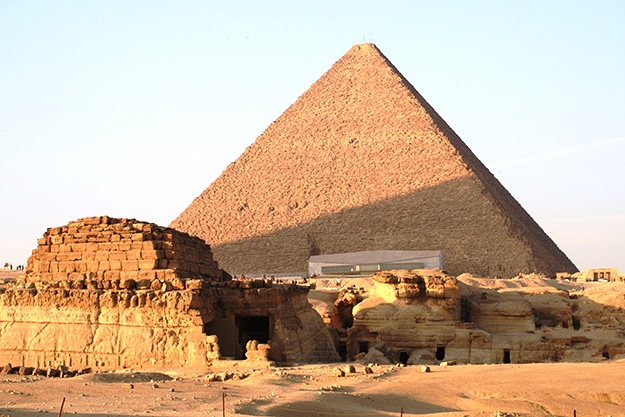
My camel handler was surprised to see me return so soon, seeing his chances of receiving baksheesh vanish! The baksheesh however was open to negotiation depending on how fruitful your visit was and how well behaved your camel. I could overlook the camel-farts and unpredictable fog for sure. But Rami need not have worried; for he had been particularly helpful. With little encouragement he had bounded up one of the smaller pyramid and secured a piece of stone as a ‘souvenir.’ Tourists, he explained condescendingly, always wanted something to remember, as if being in the very presence of the Great Pyramids was not enough. He was a shrewd one, I thought, slipping the stone into my pocket. He truly deserved an extra pound.
Once the baksheesh warmed his hands, he loosened enough to tell me about the ‘authentic’ papyrus museum outside the Sphinx gate. ‘No hassling, no cheating,’ he said as he walked away with the camel and I limped to the nearest store ready to collapse. Camels surely aren’t the most comfortable way to travel. I found the store without any difficulty.
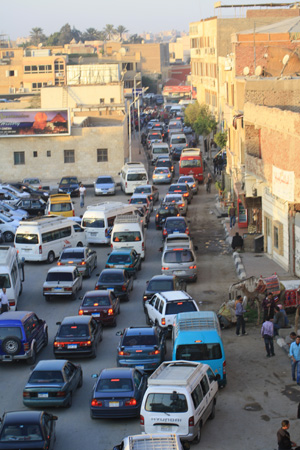
The grinning proprietor pressed tea on me and explained the methods of making Pharonic writing paper. You cut out a piece of papyrus stalk, remove the outer green, then slice the naked stalk into paper thin strips, soak them in water for 3-4 days to remove the sugar content, press it with a rolling pin, stick strips one over other, keep them compressed for few days and voila, your papyrus is ready to use!
Ingenious, I thought, and eco-friendly. After haggling over the price (from 100EGP to 20EGP), I settled for a small one and had my name written in hieroglyphics for free. He offered me another cup of tea and this time I felt I had earned it.
However, a word of caution: Pharonic writing paper is also made out of plantain stem and the only way to tell the difference is to crumple the paper and see if it breaks. Real papyrus does not. Even government-run museums are inclined to be deceitful and can slip you a plantain-stem-made paper, while smiling at you and wishing you years of luck.
My papyrus cracked. Fortunately, the tea was good.
How to get there
Those of you are traveling for the first time to Egypt on your own remember that tourism means money and most touts hanging around the train or bus stations can do with the extra pound and will go to any lengths to take it from you, even going so far as to give you the wrong info.
By train
- If you are on an overnight train from Luxor, get off at Giza station, even if you have a ticket to Cairo.
- If you are in Cairo, take the metro to Giza. It’s cheap, fast and don’t let yourself be intimidated by the touts and taxi drivers at the station willing to take you for 60 EGP.
- From Giza station, it’s a five minute walk to Giza Square where you will find buses that will take you directly to the Pyramids. Alternatively you can take a micro bus to the Nazlet el Saman village.
- Hire a horse or a camel to take you to the Pyramids. It is far cheaper and allows you to cover more ground in the desert.
Handy tips
- Egyptian pounds are either EGP or LE. Don’t get confused.
- Women try not to get too friendly with local men; your friendliness could be mistaken for other things.
- Remember there are two rates in Egypt. The local rate and tourist rate usually several times higher than local rates. Be prepared to bargain shamelessly.
- As all the pyramids and temples have different entrance fees, get yourself a full package from the vendor. You can have a small, medium or big ride, depending on the time and money at disposal. All of them usually include the major sites.
- The entire pyramid complex has been fenced off and there is now a modern place to purchase tickets to visit the pyramids.
- Some things have not changed. Tourists continue to throng to the Pyramids, Egyptian tour guides still sell them stories of Pharoahs and hawkers continue to hassle tourists but for a first time visitor all this adds to the mystic charm of Egypt.
- It is advisable to book yourself on a proper tour. You might pay a little more, but it saves you a lot of hassle.
- Learning a few words of Arabic helps. It cuts the frost very quickly when trying to negotiate!
Other attractions
- Horse/camel ride in the desert
- The Sound and Light Show at the Sphinx
- Nile River cruise
- The Museums
- A visit to Khan el Khalili souk
Consider buying
- Perfume oil
- Papyrus
- Silver cartouches
Useful info
- Egypt is predominantly Muslim country. Dress appropriately
- Always change money at licensed money exchanges if you don’t want to be short changed
- While dollars and euro are accepted, it is better to pay in local currency
- Avoid eating at roadside stalls. Cleanliness doesn’t feature very high on the agenda.
- Carry toilet paper and be prepared for lack of toilets at major tourist sites.
- Always fix a price before you start. However there are chances that you could be let off halfway into the journey if you don’t agree to pay ‘extra’ for the trip.
- There are many tourist police around. Don’t hesitate to seek help if you sense danger.
- Run at first sign of trouble. Hence the running shoes!

